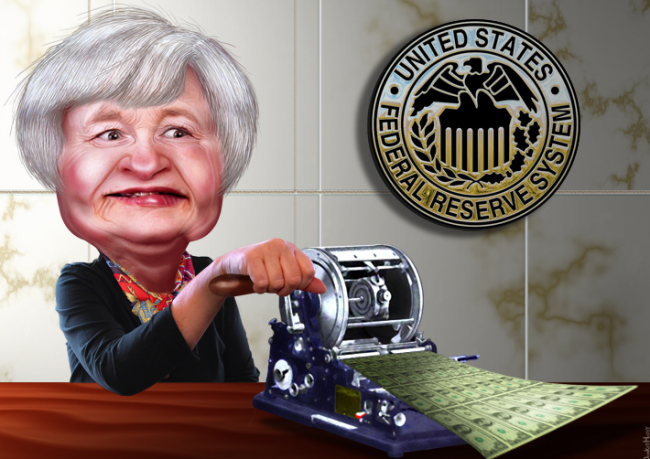FOREX TALK Global economic outlook for Q2
Post on: 16 Март, 2015 No Comment

Since the beginning of May, US economic indicators became the main driver for various global assets, due to rising expectations on the Fed reducing its monthly purchases. After US payrolls unexpectedly jumped by 195,000 jobs in June, according to recent data release, the dollar rallied and Treasuries slumped. It clearly reflects that the “tapering momentum” model can’t be better for current asset pricing, instead of using the previous risk appetite.
My model is quite consistent with the Fed’s target at this moment. The unemployment rate might retrace back to 7% as long as Non-Farm Payrolls (NFP) remain in the current momentum or above 160k every month. However, it shouldn’t blind us with the fact that overall U.S. economic conditions remain vulnerable.
In favor of duration short in US Treasury bills, it suggests that tapering will come or the zero interest-rate policy (ZIRP) period will be limited at least. However at this stage, I would be more willing to believe that “miscommunication” between the Fed and the market is due to a stress test in disguise, inspecting the economic condition if long-term borrowing rates rise. Yet, one clear intention is that the Fed is willing to “liberate” the Quantitative Easing (QE) purchase duration instead of holding the “infinite.” Meanwhile, it gives banks ample time, though it could take longer to shift their models into higher rate environments. Price volatilities are expected to increase gradually as long as zero-coupon Treasuries remain restless. Besides jobs quantity, the market started focusing on the quality of job additions as well. Currently, inflation adjusted spending is still higher than income gains among U.S. households. Due to liquidities trap playing some factors, I expect that U.S. growth in 2H might decelerate compared to 1H. This makes the first tapering possibly come in December this year instead of September, and the Fed may cease total monthly purchasing in September 2014.
However, I would like to highlight that tapering is justified if the Fed starts tightening policies, and they will put external weakness into consideration. Given the fragile environments of China and the Euro Zone at this moment, the U.S. economy continues depending on its housing market rebound and personal consumption.
Overall, the U.S. financial condition outpaced the rest of the major economies, such as Asia and the Euro Zone, since beginning of the year and its momentum will likely continue.
China’s growth will be challenging without further easing regime from officials.
Chinese growth will face tremendous challenges in the second half of the year, amid weak domestic and external demand, after a large amount of stimulus projects effects peaked. The 2Q GDP release next week and growth rate are expected to remain subdued after the 1Q GDP slowed down.
The game in China tends to be more complicated at this stage. Xi Jinping highlighted that the state’s growth will not be the target in the near term, but without further details of reform. The liquidity crunch from June should be very short-lived, but it will wane the size of shadow banking, a result of trimming social financing, which played a key role in the economic rebound late last year. The People’s Bank of China (PBOC) issued a “yellow card” to the banking sector to utilize capital effectively.
Bad stories for near-term growth are not over yet. The dramatic drop of Chinese exports and imports in June reflected well that both domestic and internal demands are weak, after the government cracked down on fake trading invoices and documents in May. The growth downgrade by the International Monetary Fund (IMF) this week suggests that export-oriented countries, such as China, may face more challenges on growth. The only good news for Chinese exports could be the likelihood of the Yuan depreciation.
Abenomics expected moving forward, despite no Bank of Japan (BoJ) announcement on further stimulus

While the Japanese economy enjoys the “green shoots” at this moment, despite criticisms continuing to elevate on its “double money base” regime, the real 1Q GDP increased sharply to 4.1% YoY from 1.2% in 4Q last year.The only concern is how Abenomics and the BoJ will strike the balance between “inflation” and “growth,” because divergence also exists in the Japanese bond market and its currency. Official words from BoJ Governor Haruhiko Kuroda are reflation instead of the weakening yen. Otherwise, it would be a “foul” judged by the Group of Twenty Finance Ministers and Central Bank Governors (G-20). Having said that, increased borrowing costs and volatilities in the bond market should be expected. But it doesn’t favor an economy that stays in recession for a prolonged period.
At this moment, I do not think the BoJ needs to be concerned much with its currency, since the Federal Reserve (Fed) tapering regime is in favor of the BoJ’s target. In the few upcoming BoJ meetings, I wouldn’t expect any bazookas because officials in Japan may start focusing on stabilizing volatilities in the bond market.
Investment Insights
Stick to US/Japanese equities and US Dollar
I remain with main investment opportunities on long U.S./Japanese equities to emerging markets (EM), and the U.S. dollar to high yield currencies. Despite Ben Bernanke’s speech yesterday, talking down the U.S. Dollar by showing the dovish base, half of the Federal Open Market Committee (FOMC) members expect that tapering will come by year’s end. I continue expecting further stimulus from the BoJ in order to reach its 2% inflation target in 2015.
Based on this strategy, I recommend the portfolio to long U.S. equities to EM equities, since I do not see that increasing discount factor will penalize equities’ valuation in the long run for the U.S. At the same time, my view is that the yield searching style should not be in favor among many investors. Thus, I prefer the U.S. Dollar to EUR, GBP, AUD, NZD in the second half of the year.














